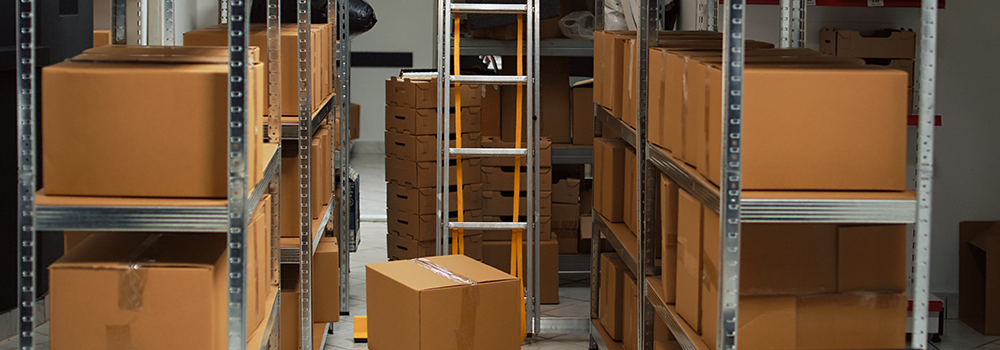Too much inventory is bad enough: Why you should avoid having excess inventory
According to Michael Baker, a retail analyst from the equity research firm D.A. Davidson, inventory is going to be the most important factor in running a business and keeping your merchandise moving in 2023 and we wholeheartedly agree. Order too little of an item and you risk products going out of stock. Stock up on too much and you may find yourself dealing with excess inventory that you may have a difficult time selling.
This article will tackle all things excess inventory-related and why it’s a problem that you will want to avoid having as much as possible.
What is excess inventory?
Excess inventory is defined as the items in your warehouse that are left sitting around after your customers’ demands for these products have been met.
This kind of inventory dilemma can occur in different situations.
Perhaps you overshot the forecasted demand for a trendy product and now find yourself dealing with items no longer in style, and thus, sellable. Maybe you have leftover seasonal products from the holidays that you cannot afford to hold onto until the next cycle comes around. Or possibly, these items may be customer returns. 30% of all online orders usually end up being shipped back to the seller by customers, making this scenario highly likely.
Regardless of how you’ve found yourself dealing with excess inventory, the fact remains that they are taking up space in your warehouse and costing your business money. The problem with holding onto your excess inventory for too long is that they slowly depreciate in value and their risk of becoming unsellable increases. Sooner or later you may find yourself dealing with a loss due to dead stock.
However, do note that not all excess stock is detrimental to your business.
Safety stock, also called buffer stock, refers to the excess quantity of certain products that businesses store in their warehouse in order to prevent an out of stock situation. Declaring your items as out of stock, especially during the middle of a sales promotion, can disrupt your sales momentum and result in missed sale opportunities. Upon seeing that your item is no longer available, your customers will turn to your competitors that have enough inventory to fulfill their needs. Consequently, having safety stock means quicker replenishment and fulfillment of orders, which leads to your customers’ improved buying experience.
Keep in mind that there is a thin line between having safety stock and an unhealthy amount of excess inventory, and this line is easily crossed as a result of poor inventory management or forecasting of demand. Not even the biggest retailers such as Walmart, Target, and Gap, are safe from having excess inventory. Reports have stated that items that used to sell quickly no longer experience the same level of demand, now ending up on clearance racks.
What could be the cause?
The next sections of this article will discuss the common causes of unhealthy excess inventory, why you should avoid it, and what you can do to prevent your business from having to deal with it in the first place.
Causes of excess inventory
Gaps in reports and forecasting
Forecasting consumer demand can be tricky in and of itself due to the amount of unpredictable variables involved. Trends change quickly and consumers’ preferences can shift within a couple of months, as clearly shown by the pandemic.
Many big retailers placed expedited orders on large quantities of products that had previously flown off their shelves during the peak of the pandemic. However, consumers’ tastes had changed as restrictions eased up and lifestyles started reverting back to the pre-pandemic norm.
As a result, merchandise piled up and companies found themselves pivoting and having to cut their forecasts to get back to healthy levels of inventory. In addition, 30% of all online orders were reported to be returned due to the same issue of fluctuating demand.
All of this may stem from a lack of centralized processes and data tracking that contributes to gaps in your demand reports and forecasts.
Seasonal demand
Offering seasonal products that are in tune with the different holidays of the year and have increased demand during these specific times is good business practice.
However, the drastic increase in demand is often accompanied by an equally drastic decrease right after the holiday celebrations end. In addition, seasonal inventory also means increased supply costs due to having to stock up months in advance. There is also the risk that the capital you invested in seasonal inventory may not return back to you in full.
Stocking up on seasonal inventory without proper planning may result in excess stock that can be difficult to sell. This difficulty stems from the demand being tied to the time-bound season, especially if the holiday the merchandise thematically falls under is a once a year event (e.g. Christmas or Halloween).
Overcompensation due to out-of-stock avoidance
As previously mentioned, declaring items as out of stock can result in your business losing momentum on sales, especially during peak seasons and campaigns
Your customers, when faced with that glaring out of stock sign or informed that the item they want is no longer available, will not hesitate to go to your competitors to find the product they need, and the chances of them returning to your store in the future are minimal.
Businesses may feel compelled to place bulk orders on merchandise to prevent this from happening. However,this solution won’t work if supply exceeds demand and you will be left to deal with excess stocks as a result.
Inefficient inventory management
Relying on manual inventory counts or taking the pen and paper approach to inventory management may work during the early days of your business, but over time, you’ll be needing something more efficient and reliable.
Failing to use the right inventory tracking system can also result in inaccurate inventory forecasts and that results in excess inventory.
Almost half of all retailers have not adopted the use of inventory management software and as a result, encounter gaps in their awareness regarding what constitutes an overstock or understock for their business.
Disadvantages of having excess inventory
It takes up storage space
All that excess inventory has to go somewhere and that’s most likely in your very own warehouse, storage unit or stockroom.
When you run a product-based business, your warehouse space is almost as valuable as the stock you carry. Making the most out of this space is crucial.
What excess inventory does is it takes up valuable real estate, preventing you from stocking up on your best sellers or even carrying new items that your customers may be interested in.
It increases inventory-related costs
In relation to warehousing and storage, excess inventory also increases your inventory-related costs. These include storage costs, measures taken for inventory control and audits, as well as the labor needed to keep the warehouse up and running.
As with all merchandise, certain measures have to be taken to keep the products in good condition in the event of a sale.
Depending on your line of business, certain items call for specific maintenance conditions such as a particular type of lighting, heating, or air conditioning. You also need to factor in the capital you’re spending for the physical handling of the goods, insurance, and security.
All of these can add up, equating to a substantial portion of your revenue. Thus, accumulating or holding on to slow-moving excess stock does your business a disservice.
It may turn into aged or dead stock
Aged stock is defined as slow-moving products that have been stored in your warehouse due to low or no demand.
Excess inventory turns into aged stock when it has been in storage for anywhere between 60 to 180 days from its receiving date.
Dead stock on the other hand, is the next stage of inventory’s life cycle, occurring when products exceed the 180-day ceiling of aged stock. These items can be unsellable due to expiration or no longer in production. For this reason, this type of inventory is usually synonymous with a loss of revenue
Both types of stock represent tied-up capital that could have otherwise been put to more productive and profitable uses.
As you hold onto your excess inventory for prolonged periods of time, they decline in value and the profit potential they hold diminishes as they convert into aged and eventually, dead stock.
It ties up cash flow
Ideally, the capital you invest in your inventory should return back to your business in the form of revenue. This opportunity can be lost when capital gets tied up in these excess items.
In addition to increasing holding, storage, and maintenance costs, excess inventory can affect your day-to-day operations as a whole, representing a bottleneck in your cash flow.
According to some estimates, businesses are holding approximately $8 trillion worth of goods in their storage spaces. This is a significant amount of capital that is made unavailable for other more productive uses.
It harms the environment
Accumulating excess inventory isn’t just financially risky– it’s harmful to our environment as well.
The problem of excess inventory occurs in all industries but food distribution, fashion, eCommerce, and electronic-based businesses are notorious for producing and discarding their excess inventory that they can no longer sell or donate. In fact, the fashion industry alone ends up discarding up to 85% of its excess items in landfills or worse, burning them.
Throwing away your excess stock may also tarnish your corporate image among your potential customers
Furthermore, even if these goods aren’t discarded, its mere existence and stagnation in the warehouse contributes to environmental damage. Production of new goods already uses up a good amount of resources such as energy and water. Transporting merchandise from Point A to Point B requires the use of vehicles that produce emissions and contribute to global warming.
Ultimately, the problem of excess stock is directly related to the issue of overconsumption of resources and the production of excess waste.
Recommended solutions to excess inventory
Sell through amped up marketing initiatives
One of the most effective strategies to sell your excess merchandise is through enticing marketing and promotional offers, such as bundling slow-moving goods with best sellers or a service.
For example, bundling car cleaning supplies with an oil change service or perhaps hair care products with a haircut makes these items more attractive to your customers who may not have even considered purchasing them.
Offering a ‘buy now, pay later’ system may also minimize your customers’ resistance to buying higher value goods, such as electronics or big appliances, solely because of their steep price point and encourage them to take the leap and purchase.
If your business utilizes eCommerce channels, consider a revamp by updating your keywords, product descriptions, and product photos that clearly communicate your goods/services and the benefits they offer.
Lastly, you may also consider offering discounts. While offering steep price drops can be counterintuitive, moderate discounts can make your products look more attractive to your customers.
Donate to charitable (and credible) organizations
If selling your excess inventory is no longer a possible option, donating to charity or thrift stores is an option that generates both a positive impact and image for your business.
Begin by finding an organization that aligns with your business’ mission and vision. Inform them of your desire to donate your items.
Next, evaluate and document the inventory that you will be donating., Once you have documented. make the necessary arrangements to ensure your merchandise gets transported and received properly.
As an added bonus, you can even deduct a portion of your charitable contribution from your taxable income if the proper conditions and requirements are met.
Liquidate your excess inventory
Lastly, there is always the option to liquidate your excess inventory as a way of recovering revenue.
While full inventory liquidation is often practiced by businesses approaching bankruptcy, this strategy of selling your assets can be beneficial even for stable companies. You can select your slow moving items to ensure that your business recovers a portion of your invested capital and remains within the healthy profit margin levels for your industry.
Remember, the longer that you hold onto excess inventory, the more it depreciates in value and eats away at valuable capital by increasing holding costs.
There are plenty of liquidation strategies that your business can initiate in-house but partnering with a professional liquidator can also make the process seamless and more efficient.
Tips to eliminate your excess inventory
Monitor trends
Having a finger on the pulse of consumer trends and the factors that affect it (e.g. social media, seasons, economic conditions) is crucial to predicting customer demand.
One way to do this is by monitoring search engine trends through the analysis of keywords that consumers are frequently using online.
If you have a list of competitors you’re keeping track of, you may also want to survey how their customers are receiving their product launches, features, and services. This will help you establish a benchmark that allows for a more data-driven and strategic contrast and comparison.
Finally, monitor your own customers and listen to what they’re saying. If you have a customer service division, capitalize on the feedback that’s already been given to find out what works and what else they may be looking for.
Adapt a pre-order system
Pre-orders help businesses gauge demand for a product so they can ensure the appropriate amount of inventory is ordered to meet that demand. This reduces the chances of an overstock (or out of stock) and allows the costs of purchasing inventory to be spread out over a certain period of time, in comparison to placing a large order at once.
Furthermore, having a pre-order system is also an opportunity to generate hype around your product launch or restock, potentially generating sales for your upcoming drop.
Establish a reliable inventory management system
Inventory management systems refers to the systematic process of tracking a business’ merchandise from one end of the supply chain to another.
As your business grows, you will find that loosely tracking your stocks just won’t cut it. Inventory management systems are essential if you are to ensure accuracy and exercise control over your inventory. This can be done in all sorts of ways from a simple spreadsheet, to inventory management software, and even 360 warehouse management systems.
This system can aid in calculating profit margins, streamlining stock levels across your different channels, and eliminating any other errors that may be caused by manual inventory control.
Best of all, a good inventory management system produces data that you can use for statistical demand forecasting in the long run.
Too much inventory, too many risks to your business
Excess inventory is a problem that creates more challenges for your business, from decreasing your storage space, increasing inventory holding costs as well as your risk for having aged or dead stock.
If you need help in managing your excess inventory, consider partnering with a professional liquidation company with an expertise in recovering value from excess items.










